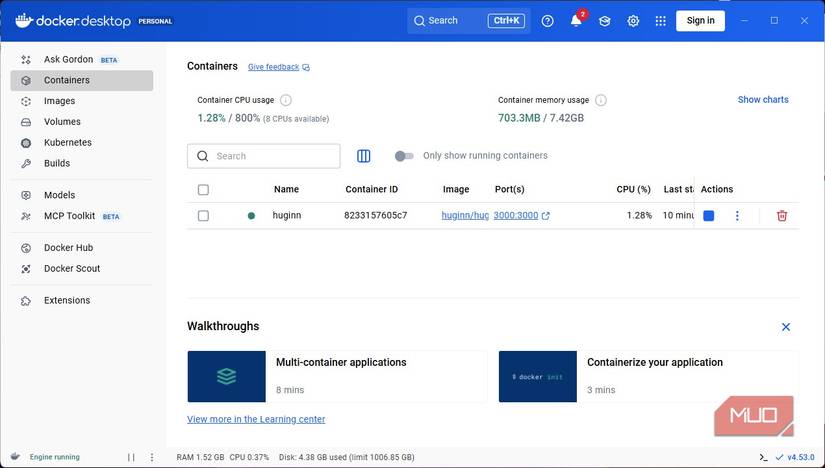https://static0.makeuseofimages.com/wordpress/wp-content/uploads/wm/2025/12/discovering-the-web-with-viralwalk.jpg
The World Wide Web is a massive universe that will take multiple lifetimes to completely explore. In fact, by habit, most people confine themselves to just a few selected parts of the web, usually Google, Facebook, YouTube, ChatGPT, and Instagram. That’s why I go out of my way to discover new and exciting websites.
I once discovered a website that allows me to listen to radio stations from around the world for free. But this time, I might have found one that’s even better: Viralwalk, a website that allows me to discover some of the coolest sites on the web. I’d give fair warning: don’t visit this website if you don’t want to waste a few hours.
Viralwalk is the anti-algorithm you didn’t know you needed
A website that lets you wander instead of search
One of the most authentic and refreshing experiences you can get on the modern web comes from landing on a website that has absolutely no idea who you are. One with no history, tracking, or algorithm waiting to nudge you towards what it believes are your favorite online destinations. That is exactly what Viralwalk does. It does not give you a search bar or a limited set of categories; you simply get the Start Walking button. Clicking it opens up the internet in a way you haven’t experienced for ages.
The first time I used Viralwalk, the experience I got was closer to wandering through an unfamiliar city than actually browsing the internet. I wasn’t looking for anything in particular, but stumbled upon actual gems.
One such gem was the Random Things To Do website. This site gives you ideas for things to do when you’re bored. Here, I spent minutes playing random games, then found drawing and painting prompts and projects to build in Minecraft. I would never have known that such a fun but simple site existed.
Exploring the web through moods instead of menus
The Walk, Chill, and Flow modes create different kinds of discoveries
Viralwalk gives you a unique way to explore the web. One of my favorites is the Mood category, which gives you a curated set of search moods. A few of the Mood options stand out and easily resonate with me. I love the Late Night Coding Vibes mood. One of the pins on this mood shows trending GitHub repositories. It became an invaluable resource that I use to find new open-source projects to test and write about. I only discovered it by chance, thanks to Viralwalk.
I also love the Digital Reading Nook mood. It has a helpful catalog of reading and writing tools, some of which I already know and use, and others that were new to me. It also has a few newsletters that I’ve now signed up for.
There are also a few other categories that I love. Flow gives a short overview of a bunch of random websites. You can keep scrolling through Flow until you find a website that catches your attention. Then click Open Site to visit it. You need to be logged in to use Flow.
Chill is also an interesting option on Viralwalk. It’s the option that allows you to relax with ambient visuals. When I need to take a break, I navigate to Chill and leave it in full-screen mode. The visuals constantly change, and it has a calming effect, perfect for a break after a long day’s work.
Collecting the gems you uncover along the way
Liked sites and albums make Viralwalk feel like a digital scrapbook
Viralwalk shows you so many interesting corners of the internet, and your first instinct is to save them. This is where the Like button comes in handy. There’s no browsing history that takes you back to familiar paths, but liking a destination saves it in your profile, and you can always come back to browse the list of liked sites.
It also has an Albums feature, which turns your discoveries into something more personal. I have an album of clever mini-projects and another for beautifully designed websites. Whenever I use Viralwalk and stumble on a website I like, I can tag it by including it in albums that are organized by theme. Anyone can browse my albums if I make them public when I create them.
A minimalist platform that quietly invites you to explore
Viralwalk’s design makes wandering the internet feel peaceful
After logging in for the first time, I saw a simple message: "Good morning." The interface had soft colors and rounded cards, and this calm layout set the tone instantly. It felt like I was opening a small creative studio rather than visiting a website.
It has a Quick Note panel on the welcome page, and I didn’t expect to appreciate it as much as I did. Mid-exploration, I keep referring back to Quick Note to jot down ideas, especially when my exploration sparks ideas that I’d love to revisit. Of course, this isn’t as elaborate as dedicated note-taking apps like Joplin, but it is a helpful little feature.
Viralwalk, however, limits you to 20 discoveries per day, and you’ll need to budget $8 per month if you prefer the pro service, which unlocks unlimited site discoveries in Flow/Walk. But the free plan is more than enough for me, since I don’t plan to spend my entire day on Viralwalk.
Wandering, surprise, and digital serendipity
Viralwalk uniquely brings the feeling of stumbling into something unexpected online. It perfectly recaptures the time when browsing meant exploring, not scrolling. It is one of the few websites I’ve stumbled upon this year. It’s just as much fun as that website that allows you to look through other people’s windows.
MakeUseOf


